A biennale that makes all the right calls: MOMENTUM 13 in Norway
In Moss, a picturesque town on the Oslofjord in Norway, a
young biennial is taking the domestic phone as source of inspiration for a
series of works inviting deep listening. Robert Barry visited MOMENTUM 13 biennale
to find how the simple act of connecting over a phone call can open up new
worlds & ways of listening.
Everyone checks their phones outside the gift shop at
Galleri F15. Between the stacks of exhibition catalogues and the doorway into
the museum’s foyer stands a big boxy cathode ray TV playing Christian Marclay’s
1995 film Telephones, a seven-and-a-half minute symphony of trilling,
buzzing, warbling ringtones culled from old Hollywood films that sound very
much like some of the popular vintage-style tones favoured by skeuomorphically-inclined
modern smartphone users. With each new trill from the telly, people anxiously
pat their pockets for vibrations or disappointedly stare at their screens.
In many ways a precursor to the Swiss-American artist’s twenty-four hour blockbuster The Clock (2010), Telephones takes clips from films like The Birds, Sleepless in Seattle, and Clerks to stage a composite phone call across time and space between Meg Ryan, Katherine Hepburn, Humphrey Bogart, and many others, with each dialling in from hospitals, hotels, call boxes and private homes, in a series of frequently ironic or otherwise amusing juxtapositions. Doesn’t everyone secretly dream that the buzz from their handset will be Cary Grant or Barbra Stanwyck?
Based in Moss – about an hour on the train south of Oslo on the coast of the Oslofjord – since 1998, MOMENTUM is amongst the first of the modern wave of biennials. For its thirteenth edition, and for the first time, it lays its focus firmly on sound – and on the uncanny transmissions of the telephone, in particular.
![]()
![]()
![]()
When we think of sound as a medium of art, we tend to picture hi-fi equipment, strange musical instruments, complex kinetic sculptures, and expensive speakers. But it is often forgotten that much of the contemporary technology of sound production and reproduction – from microphones to loudspeakers – finds its origin in the telephone.
As Avital Ronnell points out in her 1991 book The Telephone Book: Technology, Schizophrenia, Electric Speech?, “The possibility of a telephone was never fully dissociated from musical strains. From Sir Charles Wheatstone, who in 1819 called his string telephone a ‘magic lyre’, to Kafka's Castle, on whose telephone angels sing, the telephone hollowed out an eerie symphony hall for departed spirits.”
![]()
![]()
Douglas Gordon’s telephones are not ringing, but you can listen all the same. There are three of them – one in the upper gallery, one in the cafeteria, and one down in the basement toilets – all greige-coloured, wall-mounted, and faintly bureaucratic-looking, with an old-fashioned rotary dial, like props from a film about Cold War functionaries. Lift up the handset and you’ll hear Gordon’s plaintive murmur. “It doesn’t matter who I am, I just want to talk to you,” he soughs down the line from some unknowable void-space, like a man on the edge, desperate for connection of any sort.
The Scottish artist’s Instruction works (1992–2018) play on the conjoined intimacy and mystery of the telephone. Unlike most sculptures, these phones are to be touched, held, cradled even, as you listen in to soft-spoken words from an unknown source. “From the moment you hear these words until you kiss someone with brown eyes,” coos a voice without a face, opening up a new temporality defined by the exchange of tendernesses. In Gordon’s world, there is always someone waiting at the other end of the line.
But it’s not always a human voice to be found on the call. From a bright red former telephone cabin, just outside the gallery, you can pick up a rather jaunty little business card (“Call me!”) and dial into a live, real-time feed from the melting Vernagtferner glacier in Austria. “According to the season,” a voice informs me when I type the number into my phone, “you can expect the signal to be very soft.” There follows a more-or-less unvarying hiss. But in an odd sort of way, there’s a certain magic in knowing that hiss is coming from 3,000 metres up in the Ötztal Alps. Kalle Aldis Laar’s Calling the Glacier (2007) puts you on familiar terms with the great bellwethers of climate change.
![]()
![]()
![]()
Meanwhile, Stephanie Loveless helps a tree to phone home. Her work, Spisslønn/Norway Maple (2025), directs three outdoor public address horns at a single maple tree on the grounds of the gallery. They are playing a series of field recordings gathered at the tree’s relative, another Norway Maple tree near Loveless’s home in upstate New York, along with sung tones intended to draw out and emphasise particular frequencies on the recordings. The music, a driftwork of airy rushes and gentle whistles, is a hymn of praise directed at the tree itself. It is also a profound act of interspecies empathy. In a poetic spoken text accompanying the track, Loveless seems to recognise the entanglement of her own family history with the tree’s story of displacement and colonisation. At the very end, she invites the tree to sing something back, leaving a little pause on the track for the Maple’s return message to a long lost relative across the Atlantic.
As Ronell was quick to recognise, the telephone represents a rewiring of the body, a short circuit between senses. There is something similar at work in Mélia Roger’s Intimacy of Lichens/Intimacy of Stones (2021), two screens facing each other in the upstairs galleries, one shot in a national park in Brazil, the other in the forests of Fontainebleau, near Roger’s home in France. In each video, we see the artist wired up with tiny little microphones taped to her fingers, gingerly investigating the flora and fauna of each location – stroking leaves and lichen, rubbing her hands over rocks, seeking out ants and flies in dance-like gestures. Roger’s own body and its movements are central to both films, frequently occupying the centre of the frame. And amongst the background sounds of birds and the general ambience of the jungle, we hear all these crinkly, crumbly sounds like YouTube ASMR clips. Sound becomes texture, touching becomes listening. The work is exploratory in the most literal sense, but also playful and strangely personal.
![]()
![]()
![]()
In their different ways, Roger and Loveless are both giving voice to plants, rocks and trees. But there are other voices lurking in Momentum’s enchanted forest. From a pair of antiquated-looking speakers at the very edge of the woods, down by the shore, you can occasionally catch the whispering, laughing voices of the mythical huldrefolk, capricious guardians of Scandinavia’s ancient woodlands. In a hut overlooking the fjord, you can hear Maia Urstad’s rich and rather ominous electroacoustic composition, In the Unlikely Event of… (2021/2025), built on a tapestry of recorded voices, the public voices of train stations, aeroplanes and other spaces of transit. In a room entirely painted a shade of vivid citron, you might just catch the undead voices of Carl Michael von Hausswolf’s (tongue-in-cheek?) investigation of Electronic Voice Phenomenon, as he turns up the gain on a series of recordings made in the gallery itself, late at night, searching for acoustic evidence of the mysterious ‘woman in yellow’ said to haunt the building, amongst thick layers of static and hiss.
Just a few days before heading to Moss, I’d been to the Barbican’s muddy, messy Feel the Sound exhibition in London, an object lesson in how not to do a sound art group show. I don’t think there was a single work there that you could even hear properly amongst the dreadful acoustics and overcrowded spaces. I guess that’s what they mean by “immersive”. So, it was a pleasure – not to say, a relief – to arrive in Norway and find it done properly, to see this kind of art given the curatorial care and attention it deserves. From the choice of artists to the arrangement of the work across the space, the 13th MOMENTUM biennale makes all the right calls.
In many ways a precursor to the Swiss-American artist’s twenty-four hour blockbuster The Clock (2010), Telephones takes clips from films like The Birds, Sleepless in Seattle, and Clerks to stage a composite phone call across time and space between Meg Ryan, Katherine Hepburn, Humphrey Bogart, and many others, with each dialling in from hospitals, hotels, call boxes and private homes, in a series of frequently ironic or otherwise amusing juxtapositions. Doesn’t everyone secretly dream that the buzz from their handset will be Cary Grant or Barbra Stanwyck?
Based in Moss – about an hour on the train south of Oslo on the coast of the Oslofjord – since 1998, MOMENTUM is amongst the first of the modern wave of biennials. For its thirteenth edition, and for the first time, it lays its focus firmly on sound – and on the uncanny transmissions of the telephone, in particular.
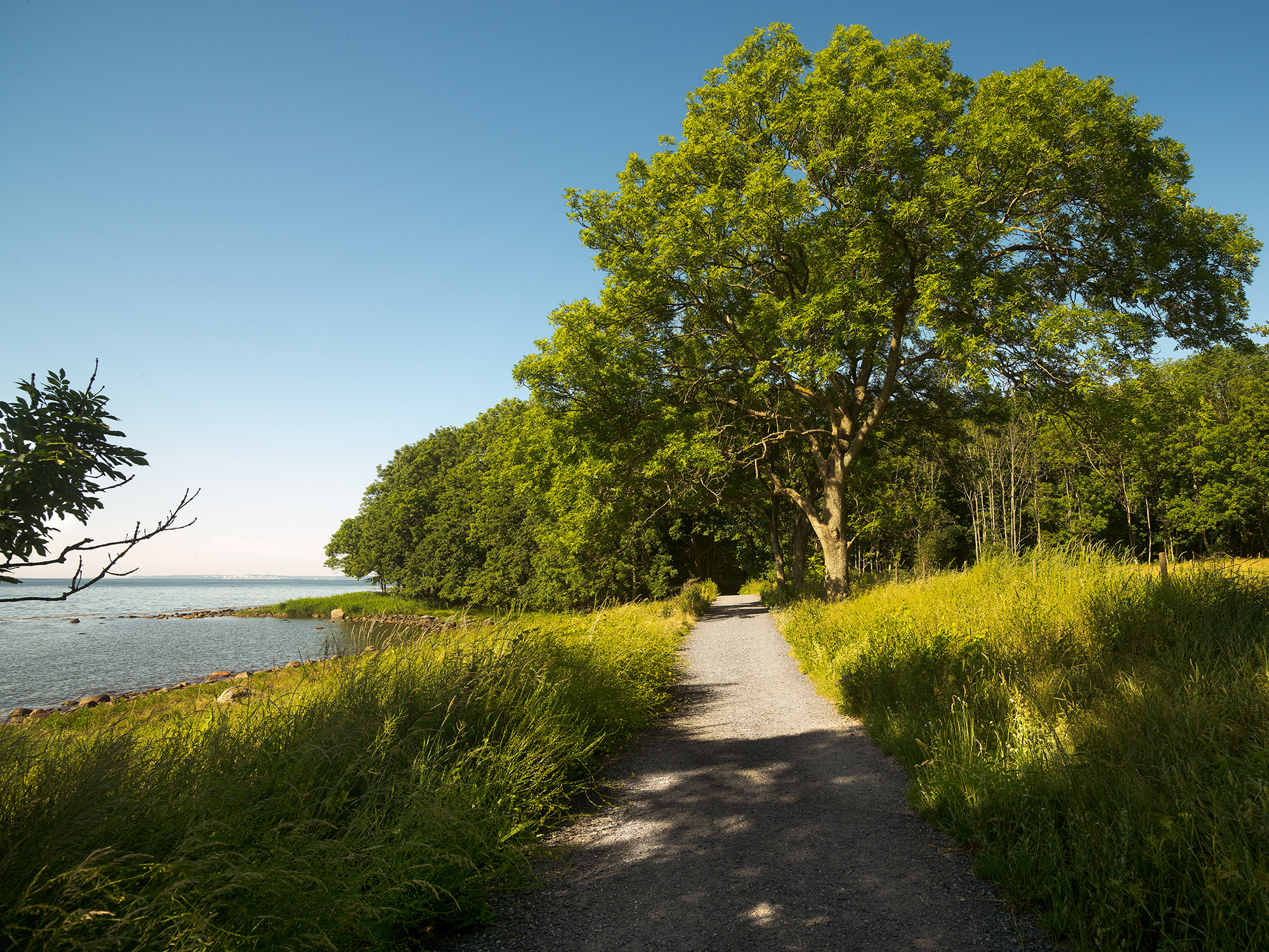

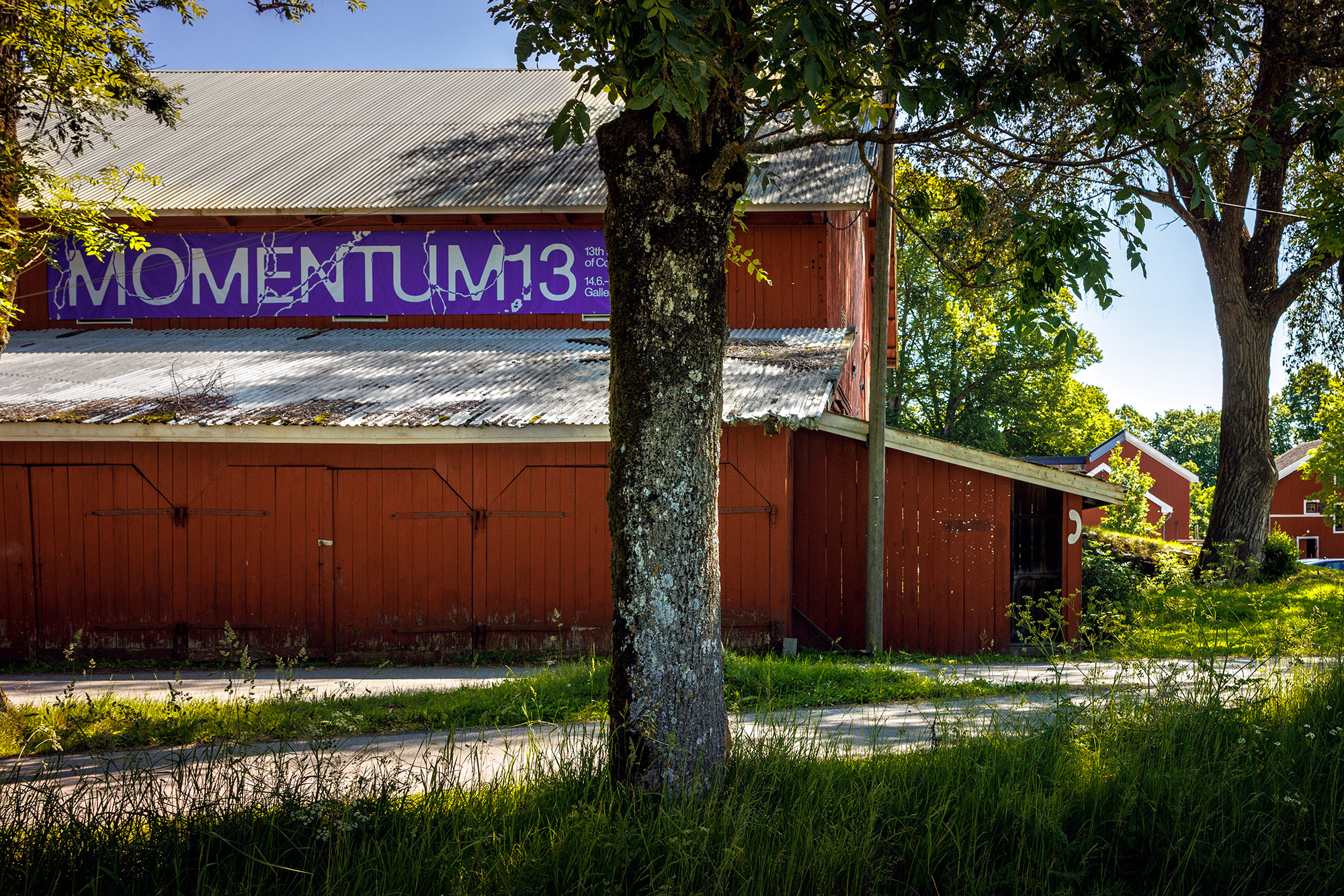
figs.i-iii
When we think of sound as a medium of art, we tend to picture hi-fi equipment, strange musical instruments, complex kinetic sculptures, and expensive speakers. But it is often forgotten that much of the contemporary technology of sound production and reproduction – from microphones to loudspeakers – finds its origin in the telephone.
As Avital Ronnell points out in her 1991 book The Telephone Book: Technology, Schizophrenia, Electric Speech?, “The possibility of a telephone was never fully dissociated from musical strains. From Sir Charles Wheatstone, who in 1819 called his string telephone a ‘magic lyre’, to Kafka's Castle, on whose telephone angels sing, the telephone hollowed out an eerie symphony hall for departed spirits.”
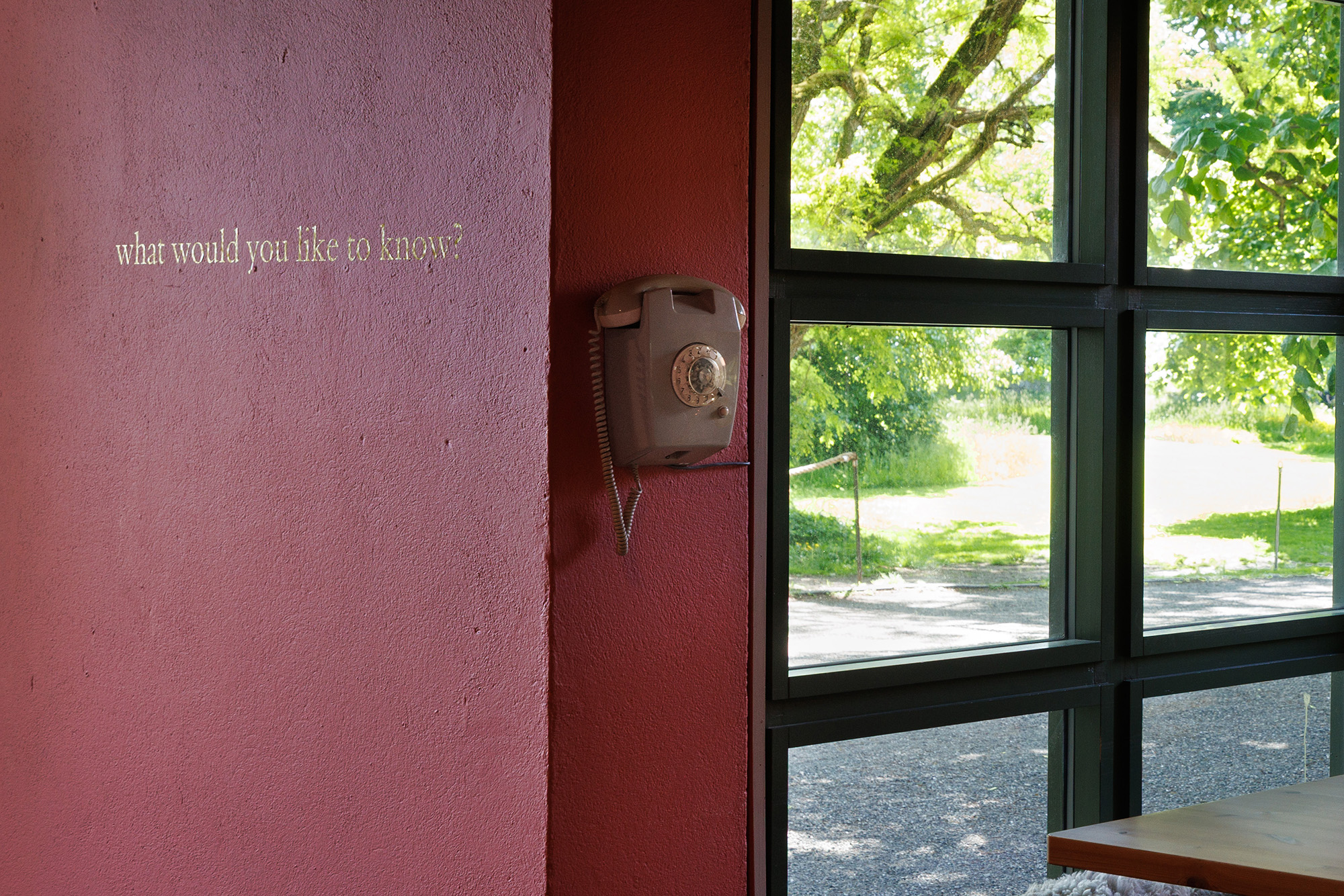

figs.iv,v
Douglas Gordon’s telephones are not ringing, but you can listen all the same. There are three of them – one in the upper gallery, one in the cafeteria, and one down in the basement toilets – all greige-coloured, wall-mounted, and faintly bureaucratic-looking, with an old-fashioned rotary dial, like props from a film about Cold War functionaries. Lift up the handset and you’ll hear Gordon’s plaintive murmur. “It doesn’t matter who I am, I just want to talk to you,” he soughs down the line from some unknowable void-space, like a man on the edge, desperate for connection of any sort.
The Scottish artist’s Instruction works (1992–2018) play on the conjoined intimacy and mystery of the telephone. Unlike most sculptures, these phones are to be touched, held, cradled even, as you listen in to soft-spoken words from an unknown source. “From the moment you hear these words until you kiss someone with brown eyes,” coos a voice without a face, opening up a new temporality defined by the exchange of tendernesses. In Gordon’s world, there is always someone waiting at the other end of the line.
But it’s not always a human voice to be found on the call. From a bright red former telephone cabin, just outside the gallery, you can pick up a rather jaunty little business card (“Call me!”) and dial into a live, real-time feed from the melting Vernagtferner glacier in Austria. “According to the season,” a voice informs me when I type the number into my phone, “you can expect the signal to be very soft.” There follows a more-or-less unvarying hiss. But in an odd sort of way, there’s a certain magic in knowing that hiss is coming from 3,000 metres up in the Ötztal Alps. Kalle Aldis Laar’s Calling the Glacier (2007) puts you on familiar terms with the great bellwethers of climate change.



figs.vi-viii
Meanwhile, Stephanie Loveless helps a tree to phone home. Her work, Spisslønn/Norway Maple (2025), directs three outdoor public address horns at a single maple tree on the grounds of the gallery. They are playing a series of field recordings gathered at the tree’s relative, another Norway Maple tree near Loveless’s home in upstate New York, along with sung tones intended to draw out and emphasise particular frequencies on the recordings. The music, a driftwork of airy rushes and gentle whistles, is a hymn of praise directed at the tree itself. It is also a profound act of interspecies empathy. In a poetic spoken text accompanying the track, Loveless seems to recognise the entanglement of her own family history with the tree’s story of displacement and colonisation. At the very end, she invites the tree to sing something back, leaving a little pause on the track for the Maple’s return message to a long lost relative across the Atlantic.
As Ronell was quick to recognise, the telephone represents a rewiring of the body, a short circuit between senses. There is something similar at work in Mélia Roger’s Intimacy of Lichens/Intimacy of Stones (2021), two screens facing each other in the upstairs galleries, one shot in a national park in Brazil, the other in the forests of Fontainebleau, near Roger’s home in France. In each video, we see the artist wired up with tiny little microphones taped to her fingers, gingerly investigating the flora and fauna of each location – stroking leaves and lichen, rubbing her hands over rocks, seeking out ants and flies in dance-like gestures. Roger’s own body and its movements are central to both films, frequently occupying the centre of the frame. And amongst the background sounds of birds and the general ambience of the jungle, we hear all these crinkly, crumbly sounds like YouTube ASMR clips. Sound becomes texture, touching becomes listening. The work is exploratory in the most literal sense, but also playful and strangely personal.
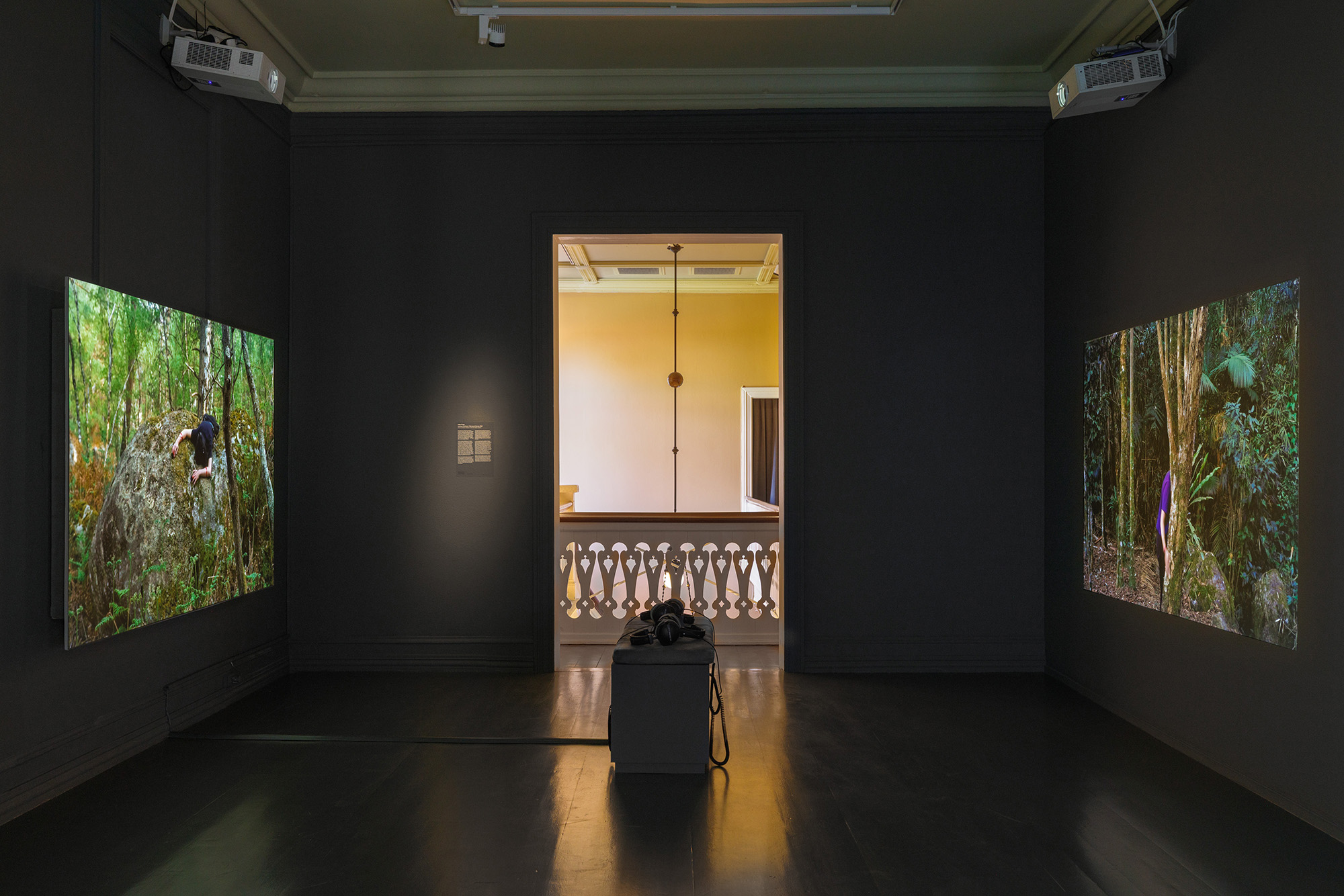
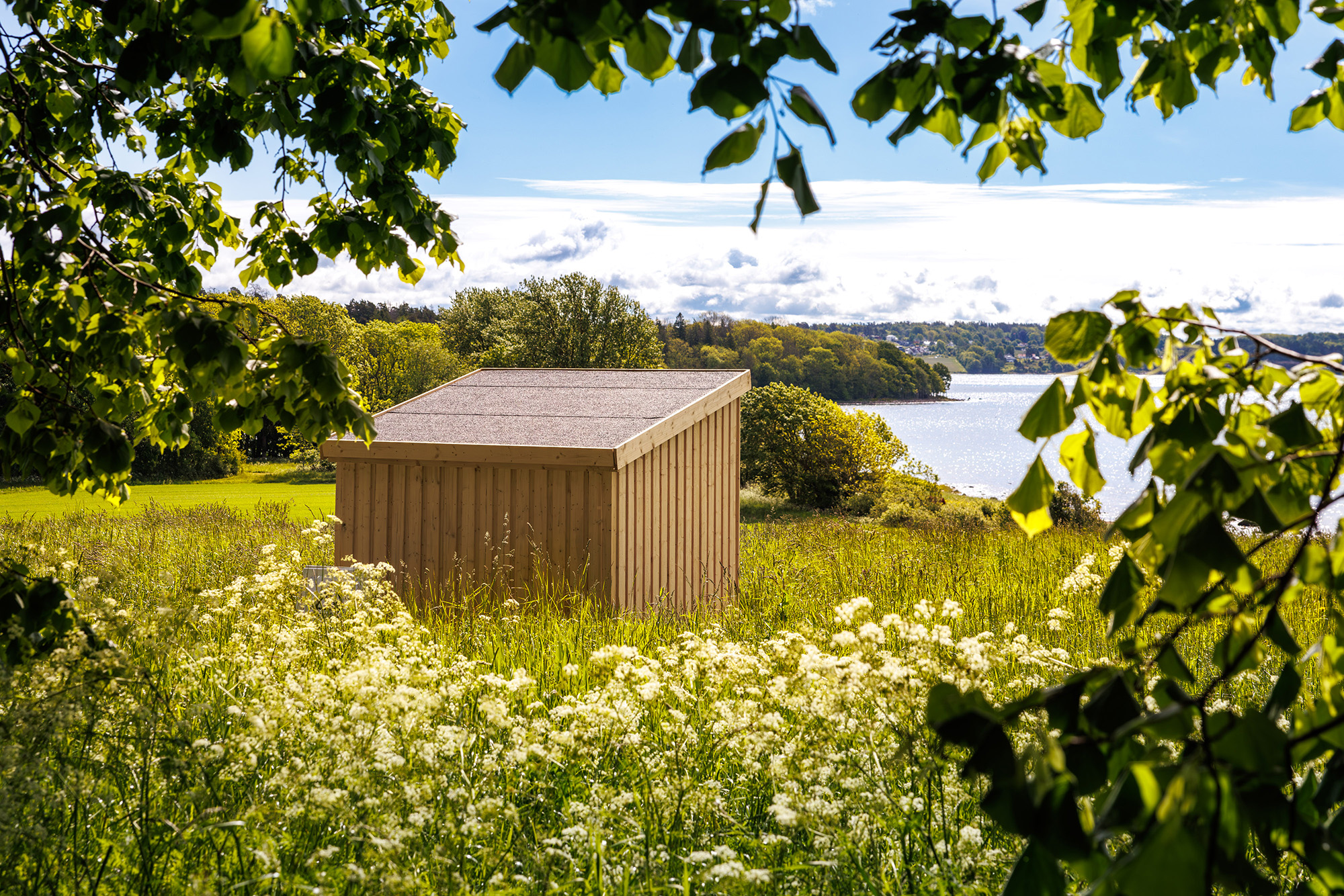

figs.ix-xi
In their different ways, Roger and Loveless are both giving voice to plants, rocks and trees. But there are other voices lurking in Momentum’s enchanted forest. From a pair of antiquated-looking speakers at the very edge of the woods, down by the shore, you can occasionally catch the whispering, laughing voices of the mythical huldrefolk, capricious guardians of Scandinavia’s ancient woodlands. In a hut overlooking the fjord, you can hear Maia Urstad’s rich and rather ominous electroacoustic composition, In the Unlikely Event of… (2021/2025), built on a tapestry of recorded voices, the public voices of train stations, aeroplanes and other spaces of transit. In a room entirely painted a shade of vivid citron, you might just catch the undead voices of Carl Michael von Hausswolf’s (tongue-in-cheek?) investigation of Electronic Voice Phenomenon, as he turns up the gain on a series of recordings made in the gallery itself, late at night, searching for acoustic evidence of the mysterious ‘woman in yellow’ said to haunt the building, amongst thick layers of static and hiss.
Just a few days before heading to Moss, I’d been to the Barbican’s muddy, messy Feel the Sound exhibition in London, an object lesson in how not to do a sound art group show. I don’t think there was a single work there that you could even hear properly amongst the dreadful acoustics and overcrowded spaces. I guess that’s what they mean by “immersive”. So, it was a pleasure – not to say, a relief – to arrive in Norway and find it done properly, to see this kind of art given the curatorial care and attention it deserves. From the choice of artists to the arrangement of the work across the space, the 13th MOMENTUM biennale makes all the right calls.
MOMENTUM biennale was established in 1998 and is
organised and produced by Galleri F 15 in Moss, Norway. For over two decades,
MOMENTUM has consistently supported compelling curatorial vision and operated
as a platform for exploring the exhibition format, both in the Nordic context
and with an international perspective.
Taking place from 14 June to 12 October 2025, the 13th
edition of the Nordic Biennale MOMENTUM is titled Between/Worlds: Resonant
Ecologies and invites audiences to embark on an extraordinary journey of
soundscapes and stories, bridging the boundaries of human and non-human worlds.
Curated by Morten Sondergaard, MOMENTUM 13 situates itself as a platform for “ultra-local”
experiences and transformative engagements with the resonant connections
between art, sound, and ecology.
www.momentum.no
GALLERI F 15 was established in 1966 and is one of
Norway’s oldest and most prestigious exhibition venues for Norwegian and Nordic
contemporary art and crafts. The gallery offers a unique opportunity to
experience art in the architectural setting of a 19th-century manor
house, surrounded by a historic county estate.
The gallery specialises in art of an experimental and
exploratory nature, including exhibitions on socially relevant themes. Through
collaborations with local and international actors in the fine arts and related
fields, the gallery endeavours to be relevant to and promote the engagement
among a wide audience. Galleri F 15 produces publications, hosts artist talks,
and organizes family activities related to its exhibitions.
www.gallerif15.no
Robert
Barry is
a freelance writer and musician based in London. His most recent book, Compact
Disc, was published by Bloomsbury in 2020.
www.writingbyrobertbarry.tumblr.com
The gallery specialises in art of an experimental and exploratory nature, including exhibitions on socially relevant themes. Through collaborations with local and international actors in the fine arts and related fields, the gallery endeavours to be relevant to and promote the engagement among a wide audience. Galleri F 15 produces publications, hosts artist talks, and organizes family activities related to its exhibitions. www.gallerif15.no
Robert
Barry is
a freelance writer and musician based in London. His most recent book, Compact
Disc, was published by Bloomsbury in 2020.
www.writingbyrobertbarry.tumblr.com
visit
MOMENTUM 13, Between/Worlds: Resonant Ecologies, organised by Galleri F 15 with Morten Søndergaard as curator, runs in Moss, Norwa, until 12 October. Further details available at: www.momentum.no/momentum-13
images
fig.i View of Jeløya, Moss, Norway. Photo© Eivind Lauritzen.
figs.ii,iv Douglas Gordon at Momentum 13 biennale. Photo © Eivind Lauritzen.
fig.iii Entrance of Momentum 13 biennale. Photo © Eivind Lauritzen.
fig.v Christian Marclay at Momentum 13 biennale. Photo © Eivind Lauritzen.
figs.vi,vii Kalle Laar at Momentum 13 biennale. Photo © Eivind Lauritzen.
fig.viii Stephanie Loveless at Momentum 13 biennale. Photo © Eivind Lauritzen.
fig.ix Mélia Roger at Momentum 13 biennale. Photo © Eivind Lauritzen.
fig.x Maia Urstad at Momentum 13 biennale. Photo © Eivind Lauritzen.
fig.xi Carl Michael von Hausswolf
at Momentum 13 biennale. Photo © Eivind Lauritzen.
publication date
27 June 2025
tags
Barbican, Robert Barry, Douglas Gordon, Kalle Aldis Laar, Christian Marclay, Stephanie Loveless, MOMENTUM, Moss, Norway, Mélia Roger, Phone, Avital Ronnell, Morten Søndergaard, Telephone, Maia Urstad, Carl Michael von Hausswolf
images
fig.i View of Jeløya, Moss, Norway. Photo© Eivind Lauritzen.
figs.ii,iv Douglas Gordon at Momentum 13 biennale. Photo © Eivind Lauritzen.
fig.iii Entrance of Momentum 13 biennale. Photo © Eivind Lauritzen.
fig.v Christian Marclay at Momentum 13 biennale. Photo © Eivind Lauritzen.
figs.vi,vii Kalle Laar at Momentum 13 biennale. Photo © Eivind Lauritzen.
fig.viii Stephanie Loveless at Momentum 13 biennale. Photo © Eivind Lauritzen.
fig.ix Mélia Roger at Momentum 13 biennale. Photo © Eivind Lauritzen.
fig.x Maia Urstad at Momentum 13 biennale. Photo © Eivind Lauritzen.
fig.xi Carl Michael von Hausswolf at Momentum 13 biennale. Photo © Eivind Lauritzen.
publication date
27 June 2025
tags
Barbican, Robert Barry, Douglas Gordon, Kalle Aldis Laar, Christian Marclay, Stephanie Loveless, MOMENTUM, Moss, Norway, Mélia Roger, Phone, Avital Ronnell, Morten Søndergaard, Telephone, Maia Urstad, Carl Michael von Hausswolf


